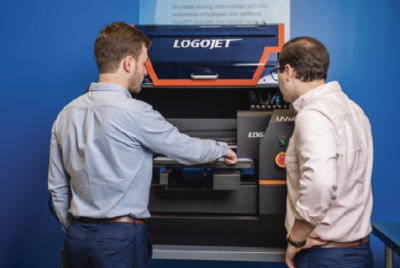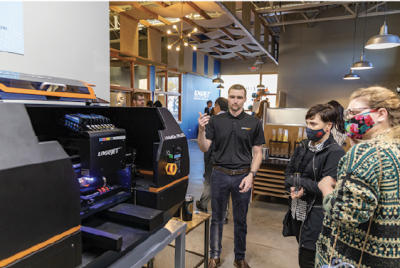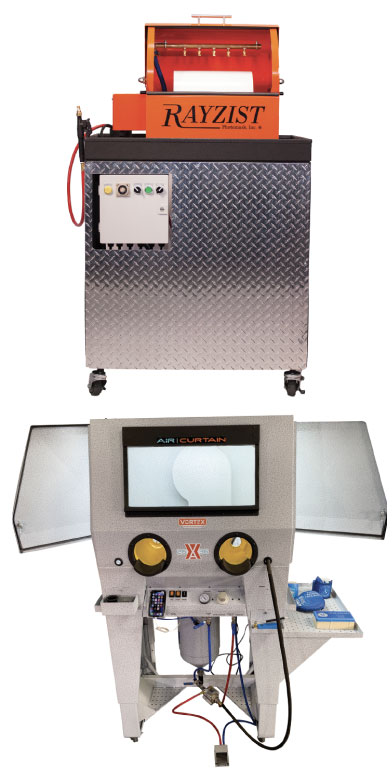As the year progresses, awards and personalization members face no shortage of challenges: supply chain delays, inflation, labor strains and more. In this climate, making the most of the equipment you already have isn’t just helpful—it’s vital. If costs rise elsewhere, after all, greater in-house efficiency can help pick up the slack.
Equipped with Efficiency
Here’s how to get the most out of your sublimation, UV, sandcarving and laser equipment.
By: Matt Blake
(Originally published in the July/August 2022 issue of Insights.)
As the year progresses, awards and personalization members face no shortage of challenges: supply chain delays, inflation, labor strains and more. In this climate, making the most of the equipment you already have isn’t just helpful—it’s vital. If costs rise elsewhere, after all, greater in-house efficiency can help pick up the slack.

Four experts on four different types of equipment—sublimation, UV, sandcarving and lasers—weigh in with tips on how to make the most of each type of equipment.
Sublimation Strategies
One of the best ways to get the most out of your sublimation equipment is to, well, use it. “Using the printer at least two to three times a week will keep it from wasting a lot of your ink and prevent clogging,” says Jared Truman, a sublimation specialist at JDS, Sioux Falls, South Dakota.
Additionally, for printers that self-clean, like Sawgrass printers, Truman recommends keeping them powered on. Constant use can also help calibrate the printer to the material being inscribed, Truman says. “Knowing how certain products will react to different times and temperatures has given us the ability to be able to test and help troubleshoot questions at a much quicker pace,” Truman says.
As for the actual printing process, Truman instructs businesses to layer the heat press and ensure it is “giving out the proper amount of heat it is set to. If the heat press has dead spots or says it is set at 400 degrees Fahrenheit but is producing under that temperature drastically, you most likely will not get good output.”
Indeed, one thing Truman says he wishes he had known before starting with sublimation printers is “that products are different enough that the amount of pressure can make or break the results.”
Finally, Truman says that the quality of what you can print depends on possessing the proper coating and fibers, namely material with UV resistance. “Sublimation has its limitations like almost any other printing process,” he says. “It needs some type of poly in the shirt or within the coating for it to absorb the ink.”
Laser Focused
If Dave Stevens, also known as “Laser Dave” in his Laser Hack videos, had to start learning about lasers all over again, he says, “Learning as much as possible with vector-based graphic design software would provide a huge leg up.” Stevens is also a technical development manager at Trotec Laser in Phoenix.
There have been recent breakthroughs with lasers, Stevens says, such as camera registration software and the incorporation of sonar technology. “There are a lot of misconceptions that laser systems are complicated to operate because this used to be the case,” Stevens says.
“Modern laser systems have eliminated some operational difficulty by using features like sonar autofocus, which uses sound waves to automatically find a focus point and built-in material databases that have material settings pre-programmed for most materials.”
These developments make lasers more efficient, Stevens says. So, how else can a business maximize the contemporary laser? “Use the entire length of the X-axis of the laser system,” Stevens says. Using the full axis, which spans from 24 inches to 40 inches, cuts a project’s time and energy output.
“Tests show that running a business card-sized anodized aluminum tag one at a time takes two minutes and two seconds,” Stevens says. “When a row of nine tags is processed across the X-axis, the average time per tag is 31 seconds, not including the additional load and unload time.”
Another tip from Stevens: Because companies typically print bold images with blocky, easy-to-read fonts, it’s possible to run the graphic at a lower dots-per-inch, like 250 or 333. “This can make the engraving process more efficient, and the quality is still excellent,” Stevens says.
In terms of investing in the right laser for your shop, CO2 often remains the better option, Stevens says, because it can process 80% of the materials that clients request. However, the market may be moving in a new direction. With “so many more metal-based fiber-friendly materials,” a laser that can do both CO2 and fiber should be considered. “A dual-source will allow for about 95% of materials on the planet to be laser-processed, expanding the materials, markets and applications when using this type of machine,” Stevens says.



LogoJET CEO Susan Cox says that once you have a UV printer, you should try to have some fun with it, and explore the possibilities.
Sand Speed
Photoresist film—the sheet that clings to a surface engraved by a sandcarver—has now been around for half a century. But Liz Haas, sales support manager at Rayzist, says that the technology has become more sophisticated in the past decade.
“It has become more durable,” Haas says. That durability allows awards makers to use a coarser grit, which in turn “will increase the speed of the etching.”
Haas, who works out of Rayzist’s Vista, California, headquarters, recommends a 120-grit size as a middle ground between speed and what most photoresist films and sandcarving stencils can handle.
Another efficiency-boosting idea, she says, is to have an outside company provide a custom mask service for the stencil, which facilitates bulk orders of one type of material. The stencil is mailed back to the retailer, Haas says, who can “just peel and stick” the image between the substrate and photoresist film. “It is less of an investment for the client, and you also don’t have the labor of the person creating the stencil,” Haas says.

Rayzist's sandcarving equipment
The UV Wave
Susan Cox, the CEO of LogoJET Inc., a Lafayette, Louisiana-based company that manufactures industrial inkjet and UV printers, says that if you want to offer your clients color, a UV printer is worth the money. In part, that’s because a UV printer can propel businesses to do more jobs in-house, whether it’s a full-color acrylic plaque or a promotional pen with a colorful logo, Cox says. “A best practice is to not just assess your immediate needs but buy a UV printer that will help you scale,” she says. Businesses “overlook the possibilities that often come their way once customers are aware of their in-house color capabilities and ultimately regret not getting something larger they will need in the next few years.”
Once you have a UV printer, Cox says, try to ensure that you and your staff have some fun with it and explore the possibilities, including printing gifts for friends. After all, a UV printer’s calling card is the ability to deposit color ink on most substrates, including some three-dimensional materials and flexible materials. “Print whatever you can. Print on your notebook, on your iPhone case—just get printing and don’t reserve it for just orders,” she says.
Additionally, Cox recommends three best practices: using a reusable sticky mat to print flat materials; implementing a fume extractor to make sure a shop doesn’t have unfavorable smells, particularly for smaller shops; and, perhaps most importantly, taking care of the printer. “Maintenance is very key,” Cox says. “This is not just an inkjet printer. There needs to be good TLC combined with frequent use.”
“Every machine has different maintenance that’s required,” Cox says. But doing the work doesn’t have to be overly time-consuming. “In general, no more than 10 minutes per week for preventative maintenance.”

Rayzist's sandcarving products
Fear Not
In helping businesses gain efficiencies, equipment manufacturers want to get one matter straight—operating these machines should not be intimidating.
“There are a lot of misconceptions that laser systems are complicated to operate because this used to be the case,” says Dave Stevens, who is a technical development manager at Trotec Laser in Phoenix.
But today, Stevens says, “Modern laser systems have eliminated the operational difficulty by using features like sonar autofocus, which uses sound waves to automatically find a focus point and built-in material databases that have material settings pre-programmed for most materials.”
As sonar has helped lasers, the durability of photoresist lasers and imaging software improvements have helped make the process of sandcarving smoother and sleeker, too.
“Sandcarving is not hard, labor-intensive or dirty,” says Liz Haas, sales support manager at Rayzist, Vista, California. “The process is quick,” in providing depth in glass, crystal and stone.
Join Today and Invest in Your Business
When you become a member of the Awards and Personalization Association, you will receive access to the print and online editions of Insights Magazine along with many other valuable benefits. Explore how we can help you get connected with industry experts, increase your skills and knowledge through relevant learning opportunities, and save money with discounts for your business.
LEARN MORE